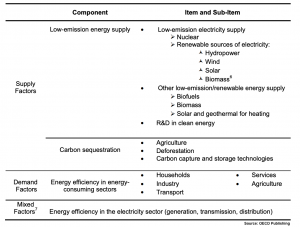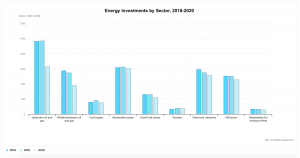By Joseph Saviour, Senior Analyst, Distributed Energy
There is a widespread consensus that climate change is occurring, caused by human-induced greenhouse gas emissions, derived from fossil fuel combustion and changes in land use (resulting in land degradation and depletion of natural carbon sinks). Rising sea levels, extreme weather conditions and other environmental pressures have the potential, if not already evident in some cases, to severely impair output and productivity on a global level. Such rising incidences point to the uncertainty of current patterns of energy use. The transition to a low-carbon emissions economy will require sizeable investments in alternative energy sources and while progress has been made over the last decade, the pace truly does need to pick up.
There is no unique definition among investors of what green investing entails. However, this type of investment activity focuses on projects or areas that are committed towards preservation of the environment i.e. pollution reduction, conservation of natural resources, generation of alternative energy sources or any other type of environmentally conscious practices. Most green investments are intended either to reduce pollution caused by energy generation, or to reduce energy consumption. This can be broken down into three main components:
- Low emission energy supply – shifting from fossil-based energy sources to green energy sources.
- Energy efficiency – reducing the amount of energy required to provide goods/services.
- Carbon sequestration – halting ongoing deforestation, promoting reforestation as a means to naturally remove CO2 from the atmosphere.
A typical structure of a green investment using the above-mentioned components is illustrated below.

Despite supply chain disruptions and slowdown in installation activity in several key regions, renewable energy has so far been the energy source most resilient to the Covid-19 lockdown measures. In Q1 2020, the share of renewables in global electricity generation jumped to nearly 28% from 26% in Q1 2019. This is because electricity demand reductions, as a result of the lockdown measures, have lifted the share of renewables in electricity supply, as their output is largely unaffected by demand. Whereas demand has fallen for all other sources of electricity, including coal, gas and nuclear power. Having said that, coal and gas sources still represent close to 60% of global energy supply.

For many investors looking to participate in green investments, renewable energy presents an attractive option. The main drivers for renewable energy being an appealing option, especially over the last decade or so, can be attributed to global economic growth, increasing prices of fossil fuel, technology advances, renewable energy policy support and increasing demand from communities for a cleaner environment. Out of the renewable energy technologies currently available in the market, solar PV technology is set to grow the fastest by end of 2020. Our article on solar’s future goes into more detail and outlines the principal drivers for this trend. Fortunately, the growth we are witnessing in this sector has paved the way for innovative tech platforms that offer managed portfolio services and a range of other investment options to investors looking to enter into the green investing space. We work with investors who have a portfolio of investments and that are interested in diversifying with annuity style returns from non co-related and low volatility assets.
If you look at the performance of investments in the renewable energy sector vs fossil fuels in US, the UK and Europe, renewable energy investments are delivering massively better returns than fossil fuels. In a study conducted by Imperial College London and the International Energy Agency, which analysed stock market data to determine the rate of return on energy investments over a 5 and 10-year period, renewable investments in Germany and France yielded returns of 178.2% over a five-year period. Fossil fuels on the other hand delivered negative 20.7%. Similarly, in the US, renewables yielded a return of 200.3%, versus 97.2% for fossil fuels. While this sounds promising and provides evidence to be optimistic for renewable energy investments moving forward, the total volume of investments is still nowhere near what’s required to decarbonise the economy and mitigate climate change. Even amid the chaos seen in the fossil fuel markets in recent years, many traditional investors still find it hard to let go of hydrocarbons and transition to alternative investments.

Investors’ attention to climate change, and green issues in general, have been rising in recent years. Developing countries are playing a growing role in scaling up green investments and while such progress is still being undermined by investments in fossil fuel intensive and inefficient infrastructure, green investing at scale is a precondition for achieving sustainable growth. Closing this gap is possible but needs to be supported by effective public policy and leadership by governments, international financial institutions and private investors.



